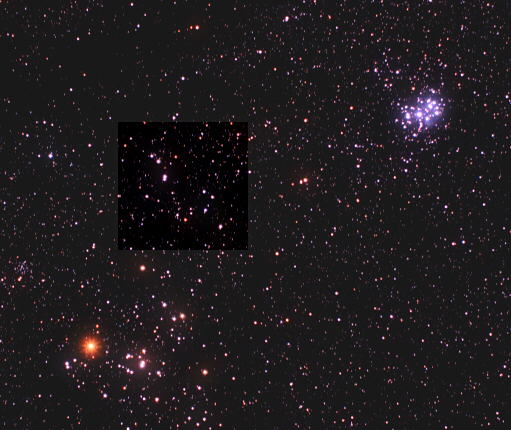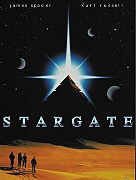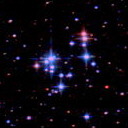
| Observing AsterismsPutting the fun back into AstronomyDavid Ratledge |
 |
IntroductionThe article that kicked me off observing asterisms was by Phil Harrington writing in Sky & Telescope over 10 years ago in the May 1998 edition. Here was an alternative to faint fuzzies. Something visible in binoculars and not requiring super dark skies. And what's more, they put a smile back on your face. If you are ready for some light relief - read on. Dot to DotThe brain is brilliant at joining up stars and seeing patterns - it is, of course, the same logic behind the popular children's puzzle of dot-to-dot. The constellations themselves are just such patterns but the term asterism is today taken as patterns of stars that are not constellations. They can be naked-eye objects, e.g. the Plough (Big Dipper), or telescopic/binocular ones e.g. the Coathanger. The stars can be unrelated chance alignments, e.g. Kemble’s Cascade, or part of a related cluster e.g. ET in NGC 457. There are probably many more out there waiting to be discovered – they really only become obvious when someone makes the connection and draws our attention to them. Oh and a good name helps too. ObservingThe asterisms featured here are binocular or small telescope asterisms. For observing them I would recommend image-stabilized binoculars. Although these can cost as much as a small telescope, they are brilliant for tracking down asterisms and perhaps even discovering a new one of your own. They are also easy to carry out into dark skies where they can often show more than a big telescope in light-polluted suburbia. I have used both the Canon 15x50is and 18x50is and can recommend both of them. Dark skies are not obligatory and suburbia is perfectly suitable for viewing asterisms. Remember, observing asterisms is supposed to put a smile on the observer’s face – they are purely for enjoyment. There’s no science or deeper meaning here, just fun. ReferencesThere is no Messier catalogue of asterisms and therefore no definitive list. I suppose that’s understandable as perhaps one man’s asterism is another’s jumble of stars. I've already referred to Phil Harrington's article on Asterisms. His subsequent observing books have also included lists of asterisms and he gave them a Star # - see the table below. Things have moved on and several of the common planetarium software packages (e.g. TheSky) now include a selection of asterisms. So too do the databases in modern goto telescopes. However, the most comprehensive list is by Steve Coe of Saguaro Astronomy Club (SAC). This is online and freely available – see their downloads page. Surprisingly, even here there are some omissions, probably most notably there is no mention of one of my favourites - the “37” cluster, NGC 2169. Sue French in her Sky & Tel scope monthly observing column often includes an asterism amongst the objects . Sometimes these are "new" ones so it is always worth checking out her article. The following list is my personal selection of asterisms - ones that appealed to me. I hope you enjoy them too.
|
Cast in order of
Kemble’s CascadeFather Lucian Kemble was a keen binocular observer and, whilst sweeping across featureless Camelopardalis, came across a 2° long string of stars. At the end of the string was the misty patch of open cluster NGC 1502. He likened the asterism to a waterfall ending in a pool. He reported his discovery to Walter Scott Houston and the name Kemble’s Cascade was the result. For a finder chart for Kemble's Cascade see Brian Fenery's site He also provides an animated gif showing how to find the cascade
region at different limiting magnitudes: click here |
 |
Takahashi FSQ106 + Canon 60D |
Kemble 2 or Mini-CassiopeiaTurn left at Chi Draconis for this little asterism made up of 7th-8th magnitude coloured stars. Much smaller than Kemble's other asterisms and one best suited to a small telescope. It is a surprisingly close approximation to Cassiopeia. Perhaps should known as Kemble's Kassiopeia! |
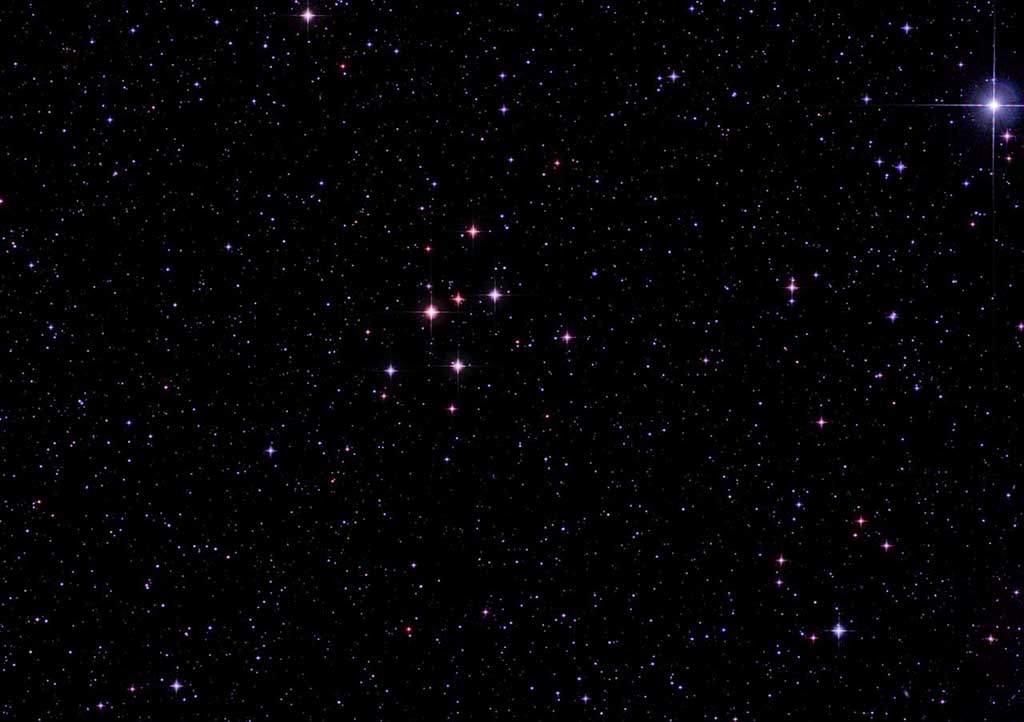 |
Takahashi FSQ106 + Canon 20Da |
Kemble’s KiteThat man again but for some reason this asterism is much less well known. Located in northern Cassiopeia, near to its border with Camelopardalis, this asterism is also about 2° long and represents a diamond shaped kite with a tail. |
 |
Takahashi FSQ106 + Canon 60D |
The CoathangerProbably the one that sparked the interest in asterisms for most observers – certainly it's the most famous. Its other name is Brocchi’s Cluster and also Collinder 399. It has a very faint open cluster adjoining it (NGC 6802) on its east or left edge. |
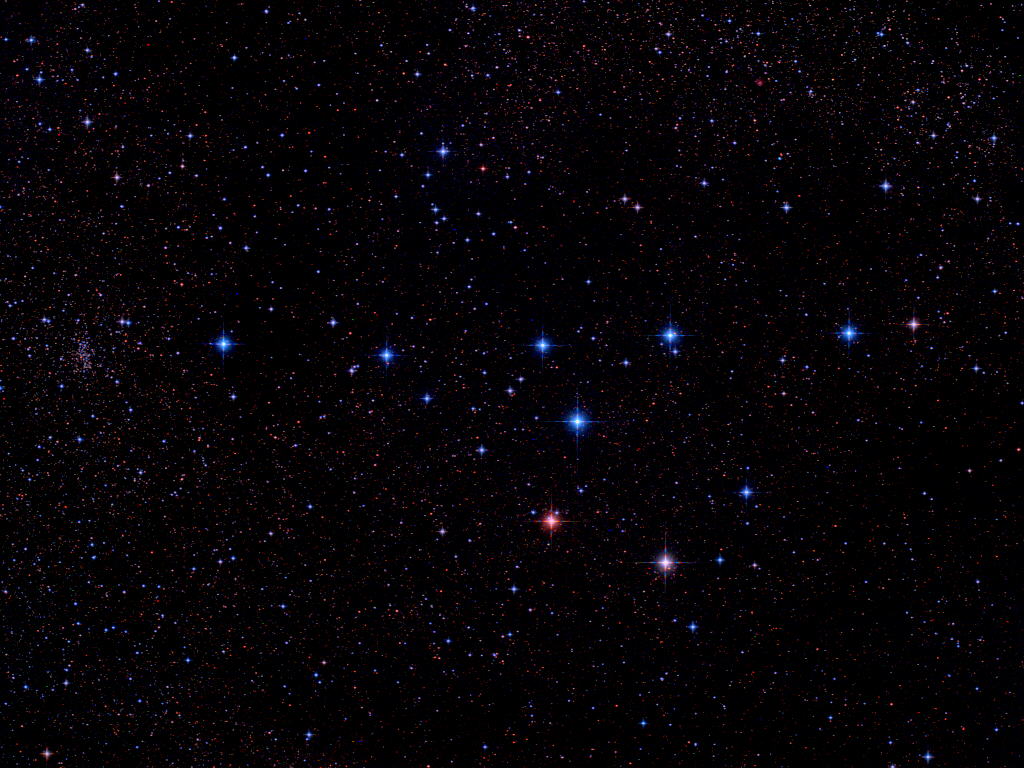 |
Takahashi FSQ106 + Canon 300D |
The Engagement RingAlso known as the Diamond Ring, my best view of this object was with 18x50 image-stabilised binoculars from the dark skies of the Lake District. In these it somehow looked a much more obvious ring than any image can portray. If you are wondering where it is, then the diamond in the engagement ring is Polaris. |
 |
Takahashi FSQ106 + Canon 300D |
“IC 37”The answer to Life, the Universe and Everything is not 42 but 37 – it's written in the stars – or more precisely it is in NGC2169. It is not really an IC object, it is shorthand for “I see 37”. With those image-stabilised binoculars the 37 is the right way up – at least for observers in the northern hemisphere it is. It is a bit small for binoculars and is at its best in a telescope, where it is upside down. |
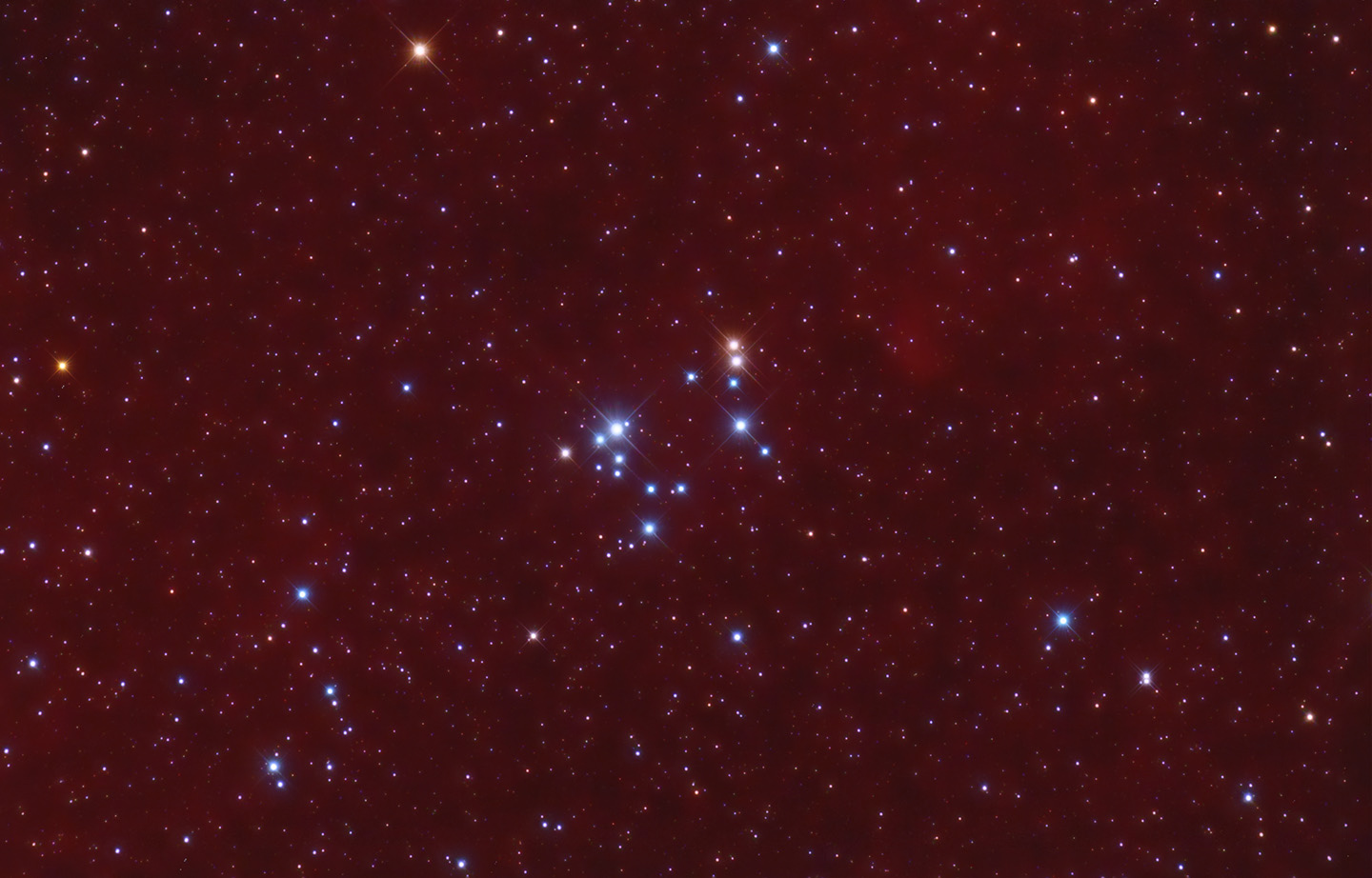 |
RCOS 12.5inch & Takahashi FSQ106 |
Pakan’s 3In binoculars this looks more like a McDonald’s M to me rather than a number “3”. Although Sirius is the pointer to this object it is actually in Monoceros and was discovered by Canadian Randy Pakan. Size is about the same as the full Moon so binoculars with a bit of magnification are best, those 15x or 18x IS binoculars are just right. |
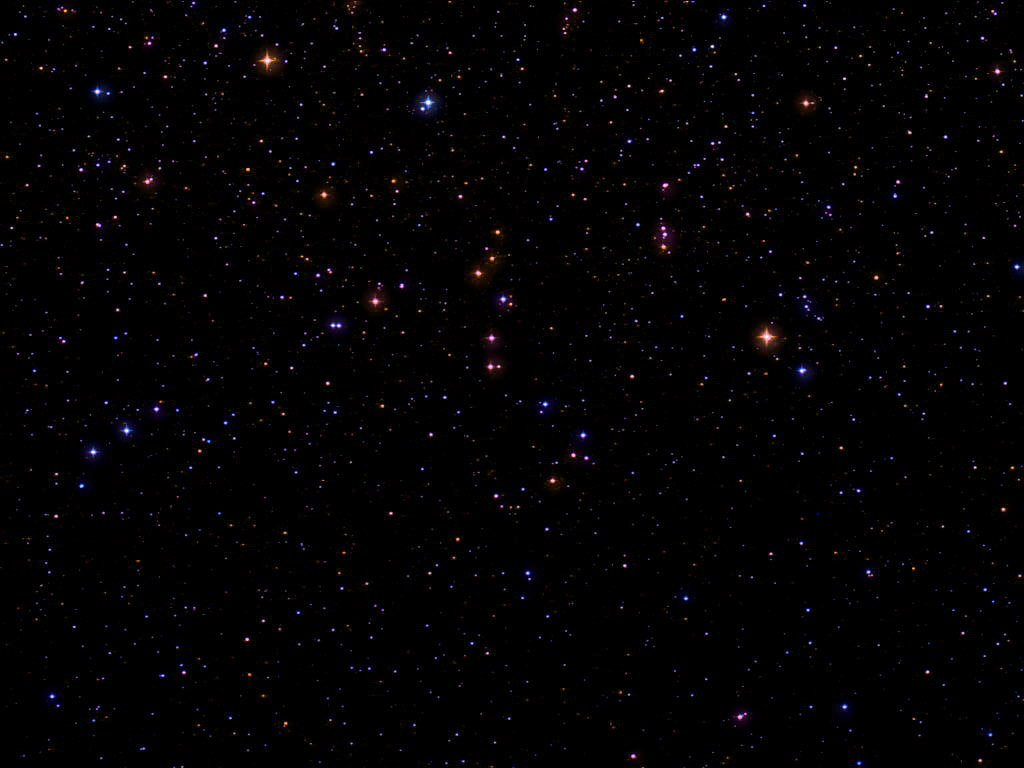 |
Takahashi FSQ106 + Canon 300D |
Greg’s 3Just like busses - two "3s" come along together! This is Greg's quote of his discovery in Spring 2013: "I found this initially just by scrolling through "the Sky 6" looking to see if there was anything new and interesting to image. I couldn't believe it when a clear "3" flashed across the monitor." It just shows that there are probably more asterisms out there waiting to be spotted.
|
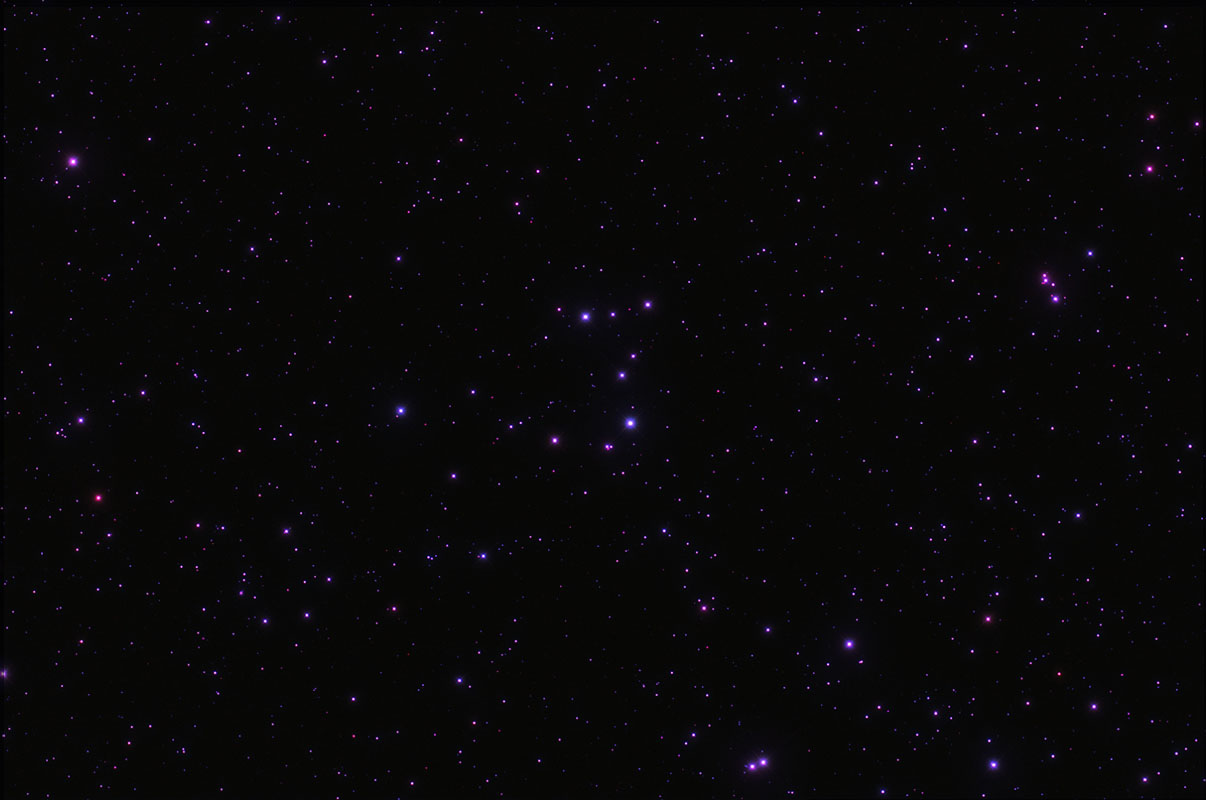 |
Takahashi FSQ106 and Canon 60D |
The SailboatNot very well known asterism above Leo containing the star 22 LMi. Upside down in binoculars with 2 redish stars in the mast. |
 |
| Takahashi FSQ106 + Canon 300D
|
ETThis object has undergone a name change. Formerly called the Owl Cluster it is more often now called the ET Cluster. The Owl’s eyes have become those of ET. Located just below (south) of the W of Cassiopeia this in one of the best clusters in this constellation. Correct name is NGC 457. |
 |
| Takahashi FSQ106 + Canon 300D
|
Delphinus MinorA new one to me which I was not aware of until Sue French wrote about it in Sky and Telescope December 2007. She credited the discovery of this look alike to the constellation Delphinus to Dana Patchick. It is just over a degree tall and best in binoculars. It is located on the western edge of the square of Pegasus. |
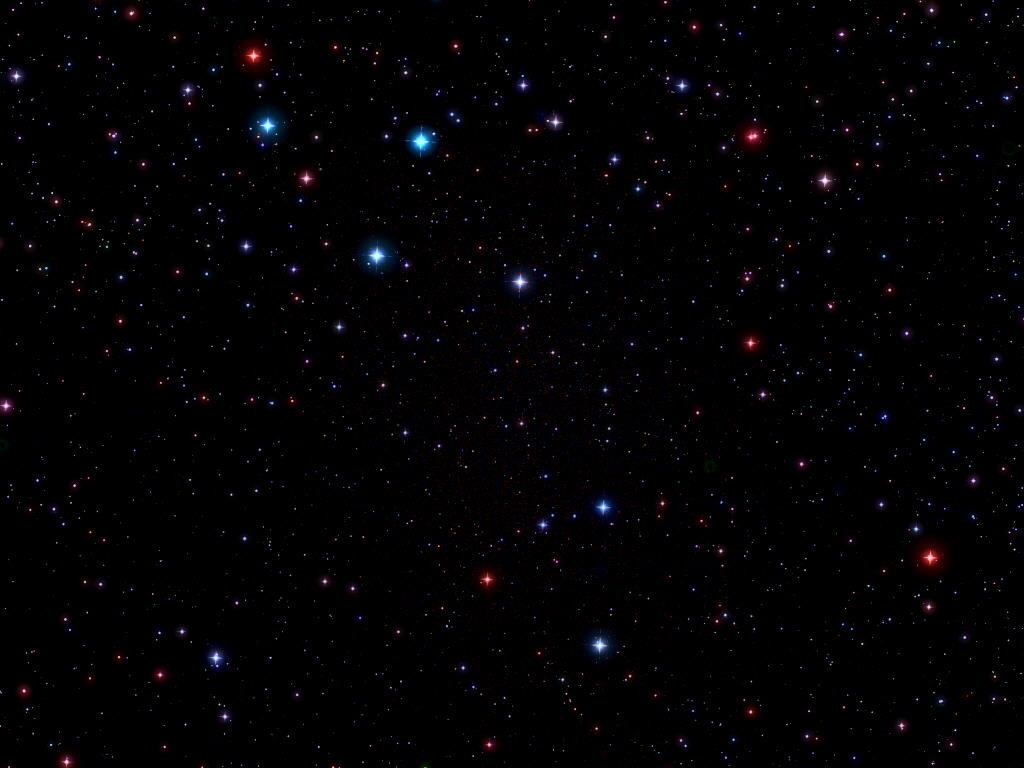 |
| Takahashi FSQ106 + Canon 300D
|
The Golf PutterA bit similar to Kemble's Cascade. A 1 degree long string of stars and a cluster at its end. This time the string of stars finishes in a right-angled bend forming the putter head. Open cluster NGC 752 is the ball. |
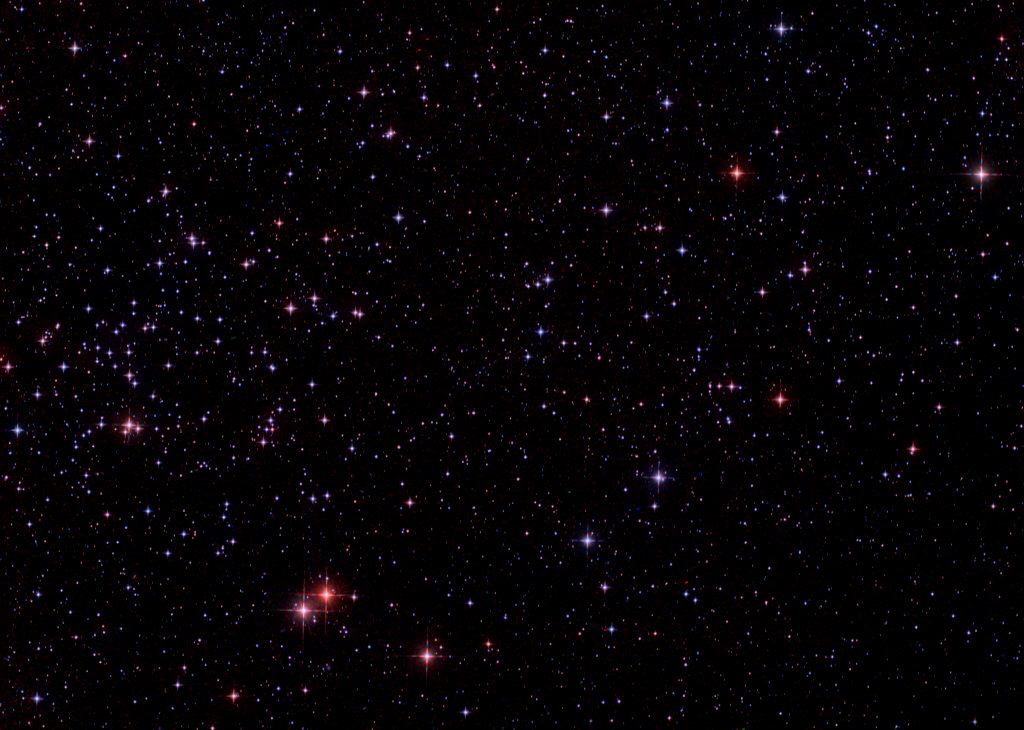 |
| Takahashi FSQ106 + Canon 300D
|
Ally's BraidThis asterism was drawn to my attention by it's discoverer Stephen Saber although it is also included in Steve Coe's SAC Asterism Database. It's one of those objects every one has seen, as it is part of the Pleiades, but probably not noticed. It refers to the 7 bright stars located in the SE of the Pleiades arranged in a fairly open V shape. If you are wondering where Ally comes from then it is short for Alcyone, the bright star above the star chain. |
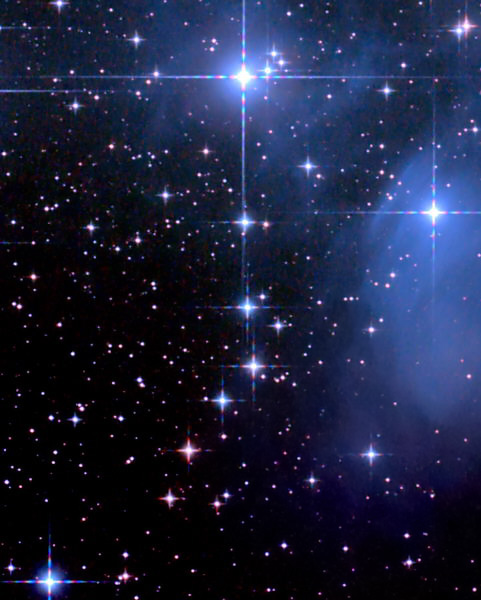
|
|
|
The Seven Sisters of the PoleVery much a binocular asterism, the Seven Sisters of the Pole are a group of brightish stars in a shape reminiscent of the Pleiades. Although the pattern is similar these sisters are larger than the original. Very close by is the old open cluster NGC188 which is just visible in the image below. |
|
| Canon 20Da with 135mm Pentax Lens
|
|
The Flying MinnowPretty group of 5 bright stars, plus several fainter ones, spanning about 3/4 degree in Auriga. It is located just SE of the Flaming Star and includes 16; 18 and 19 Aurigae. I assume it gets its name from its similarity to Delphinus - a bit confusing as we already have an asterism called Delphinus Minor! The open cluster to its east (left) is NGC1893. |
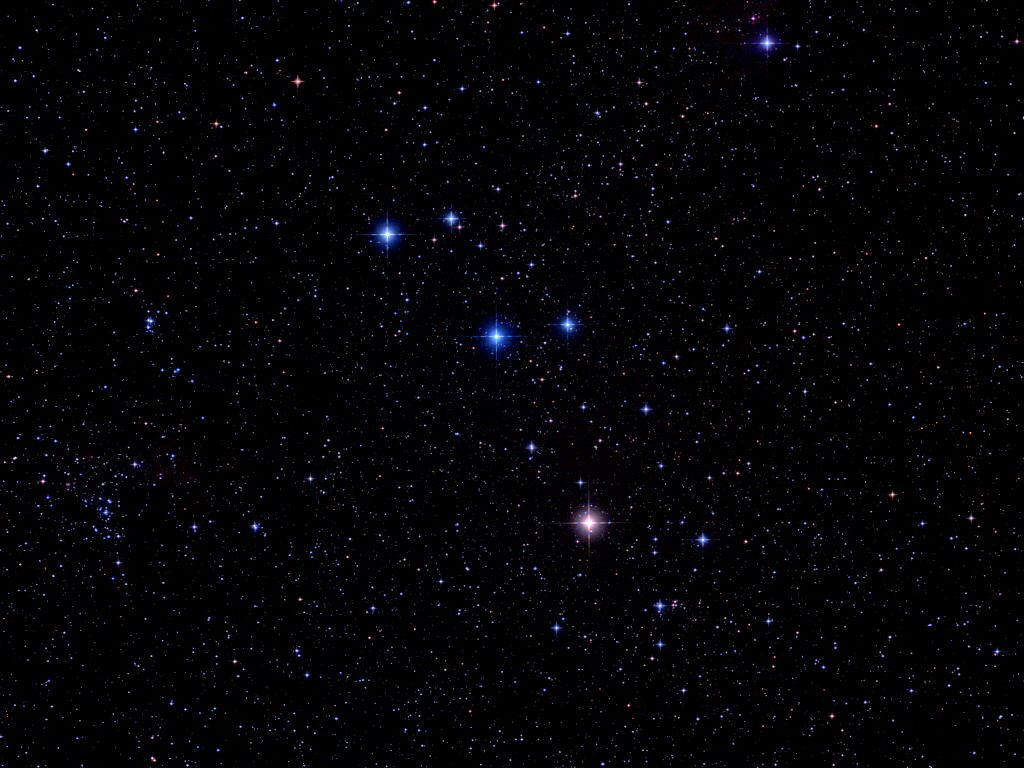 |
| Takahashi FSQ106 and Canon 20Da
|
Lambda-LambdaLambda Orionis has a pattern of stars around it that, very appropriately, mimics the shape of the Greek letter lambda. One star where you should never forget its name! |
 |
| Takahashi FSQ106 and Canon 20Da
|
Davis' DogBetween the Hyades and the Pleiades lies a rather prominent grouping of stars, just visible to the naked eye. Can you see a dog? John Davis certainly did and Davis' Dog was born. At 3.5 degrees nose to tail it is too big for telescopes but ideal for binoculars. |
|
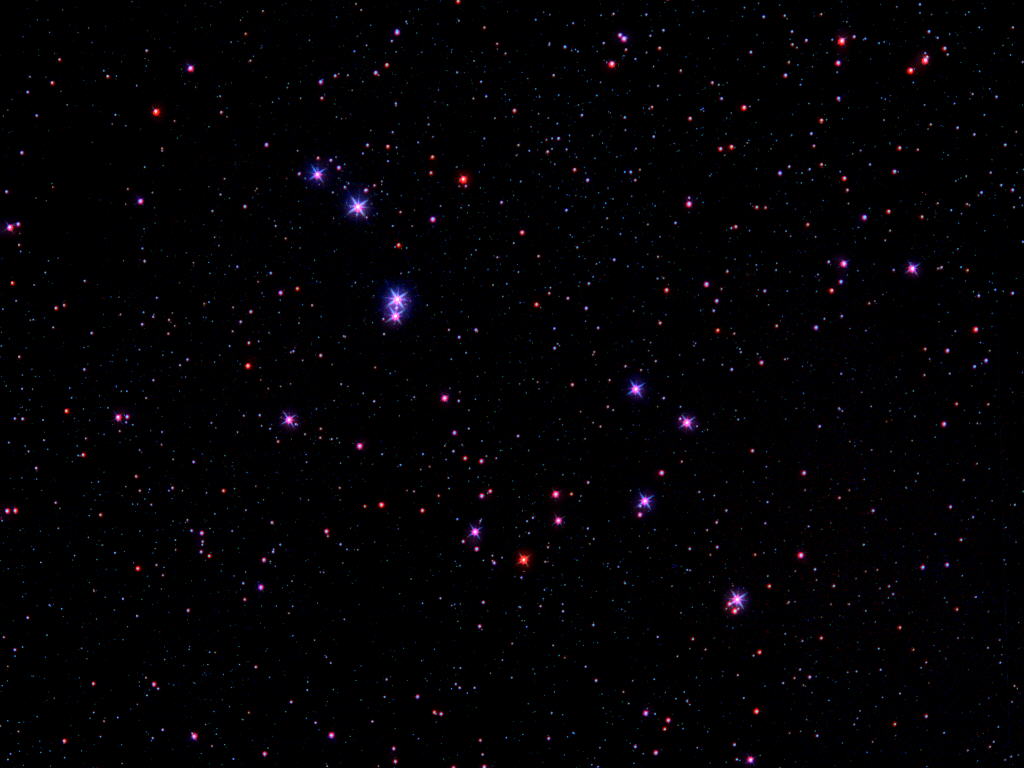 |
|
Canon 20Da and 135mm Pentax lens |
Klingon BattlecruiserIt's bad news if you see one of these coming towards you! In reality it is open cluster NGC 1662 but it does bear an uncanny resemblance to a Klingon Battlecruiser of Star Trek fame. Russell Sipe (Sky&Telescope, February 2005) was first to spot that the stars fitted the running lights of the battlecruiser (D7 Class). Not to be confused with a Romulan Warbird! NGC 1662 is a young open cluster situated in the direction of the galactic anticenter and relatively distant from the galactic plane. This large distance from the plane may seem surprising for such a young cluster and suggests that the formation mechanism could have been the collision of a high velocity cloud with the gas of the galactic plane. (Ref: Dias at al., Astronomy & Astrophysics 2000). |
|
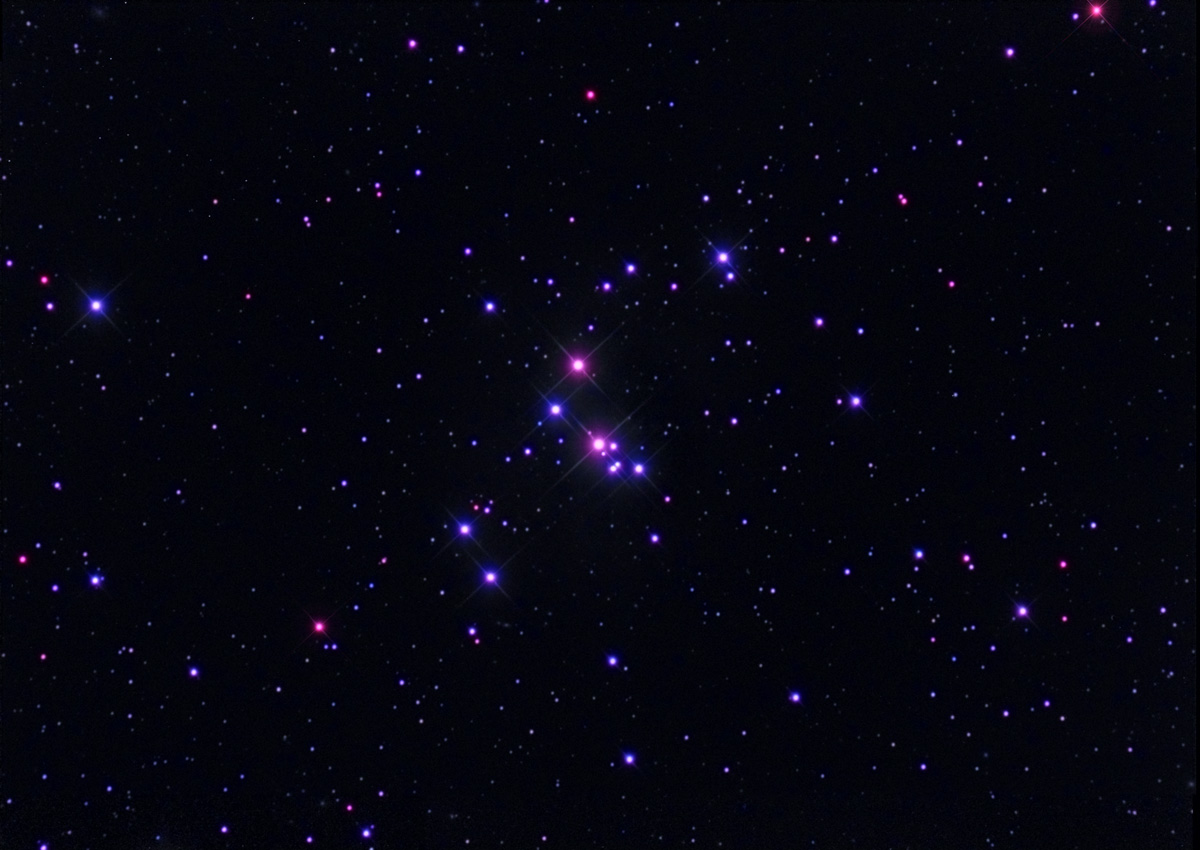 |
|
RCOS 12.5 inch |
|
The Broken Engagement RingPerhaps more a tiara than an engagement ring, but this small grouping of 10 or so stars is perfect for a small telescope. Located just west (right) of Beta Ursa Majoris, the lower of the two pointers, means it is easy to find and visible all year from northern latitudes. |
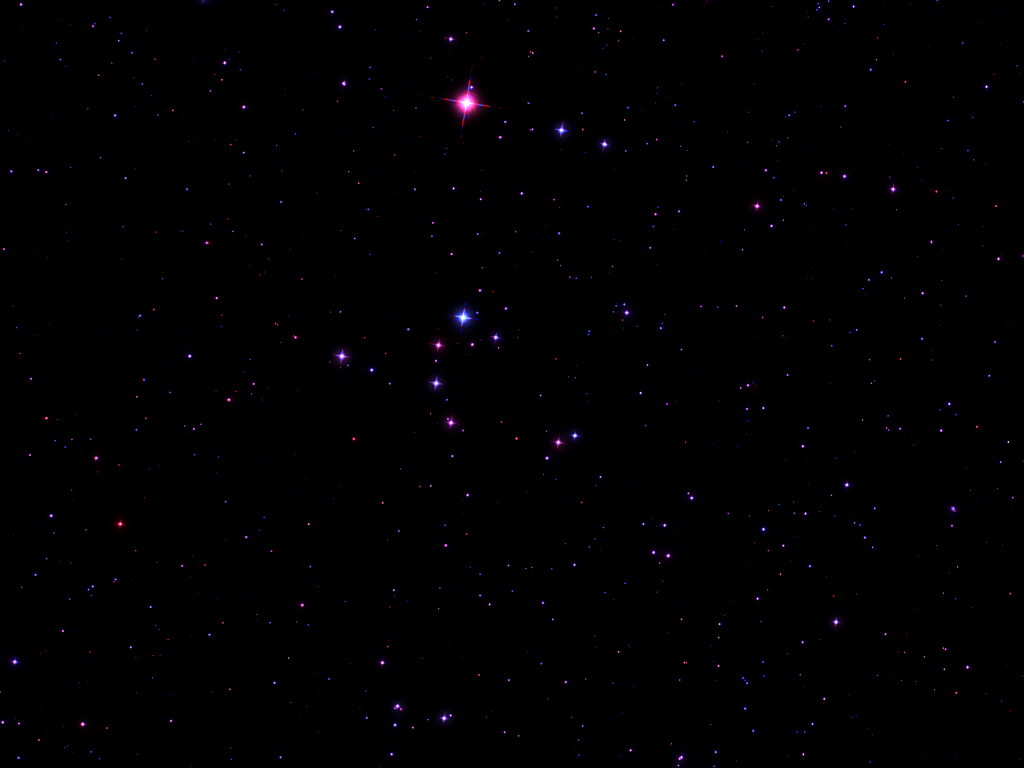 |
| Takahashi FSQ106 and Canon 300D |
The Mini-CoathangerMuch fainter (stars mag. 9 to 11) and much smaller (about 20 arcmin long) than the original in Vulpecula, this asterism is to be found in Ursa Minor. Discovered by Tom Whiting (President Erie County Mobile Observers Group). |
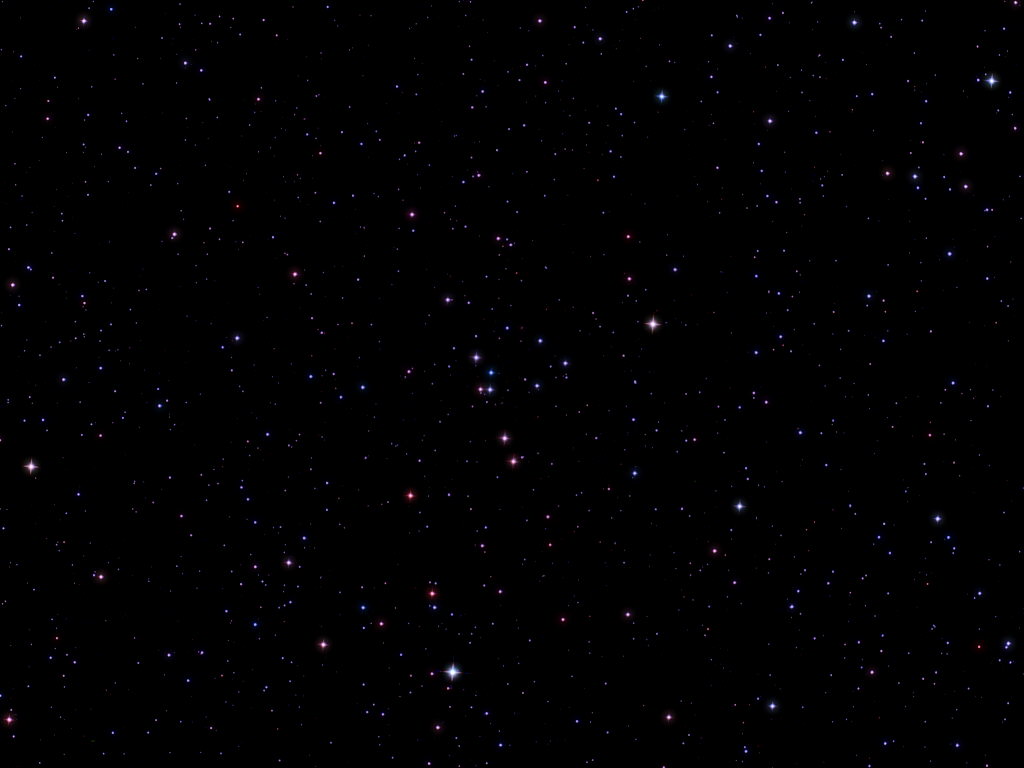 |
| Takahashi FSQ106 and Canon 20Da
|
StargateLocated in Corvus just 1 degree west of the Sombrero Hat Galaxy (M104), this striking Asterism is named after its similarity to the legendary "Stargates" of Science Fiction. Stargates first appeared in the Buck Rogers 1970s TV series and again in the 1994 film of the same name. (Thanks to Eric Canali in bringing to my attention that Buck Rogers got there first!) It comprises two equilateral triangles, one inside the other although the inner one is too small to resolve with binoculars - even image stabilised ones - so a telescope is best. The stars range in brightness from Mag. 6.6 to 11.5 and were actually catalogued by FGW Struve as STF1659 in his double/multiple star catalogue. The westerly (rightmost) star has a close companion if you look carefully. So presumably until the film made it famous, this object was is was known as STF1659 - not quite as cool a name as Stargate! Disclaimer: If you are pointing your telescope at this object precisely at the time Aliens come through it and they abduct you - don't blame me! |
|
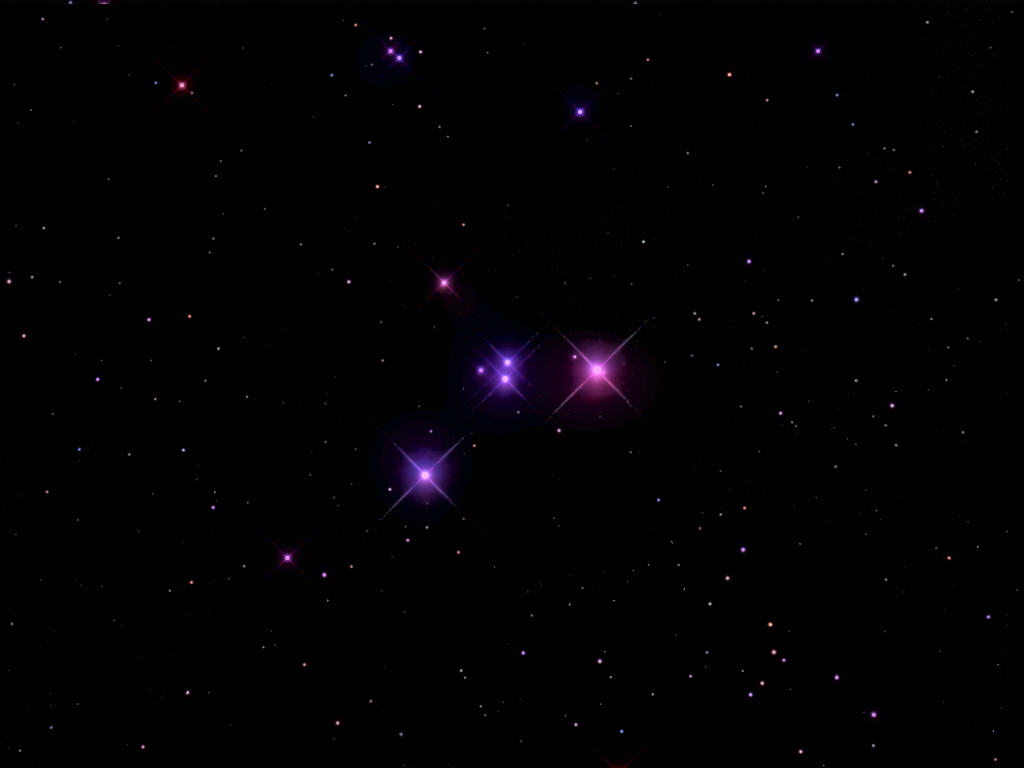 |
|
RCOS 12.5 inch RC and Apogee Alta U9. |
|
JawsNamed after its supposd likeness to a shark, this asterism is located in Virgo just north-west of the Sombrero Hat Galaxy (M104) and close to the Stargate Asterism. About half a degree long and with stars mags. 7.6 to 11.5 this isn't the brightest asterism for binoculars but the 4 stars making the head are the most prominent feature. This quartet lies at right angles to the body and can either be taken as the shark's open mouth or alternatively, perhaps it is a hammer-head shark? The westermost star it obviousy the shark's dorsal fin. All in all, with M104 and Stargate nearby, this trio are too good to miss. |
 |
| Takahashi FSQ106 and Canon 20Da |
Napoleon's HatArcturus points the way to this asterism discovered by the Frenchman Fulbert Picot and named after its resemblance to the Emperor's hat. The stars are not overly bright at around Mag. 9.5 to 10.5 so a small telescope is best. Looks more like a flying saucer to me! |
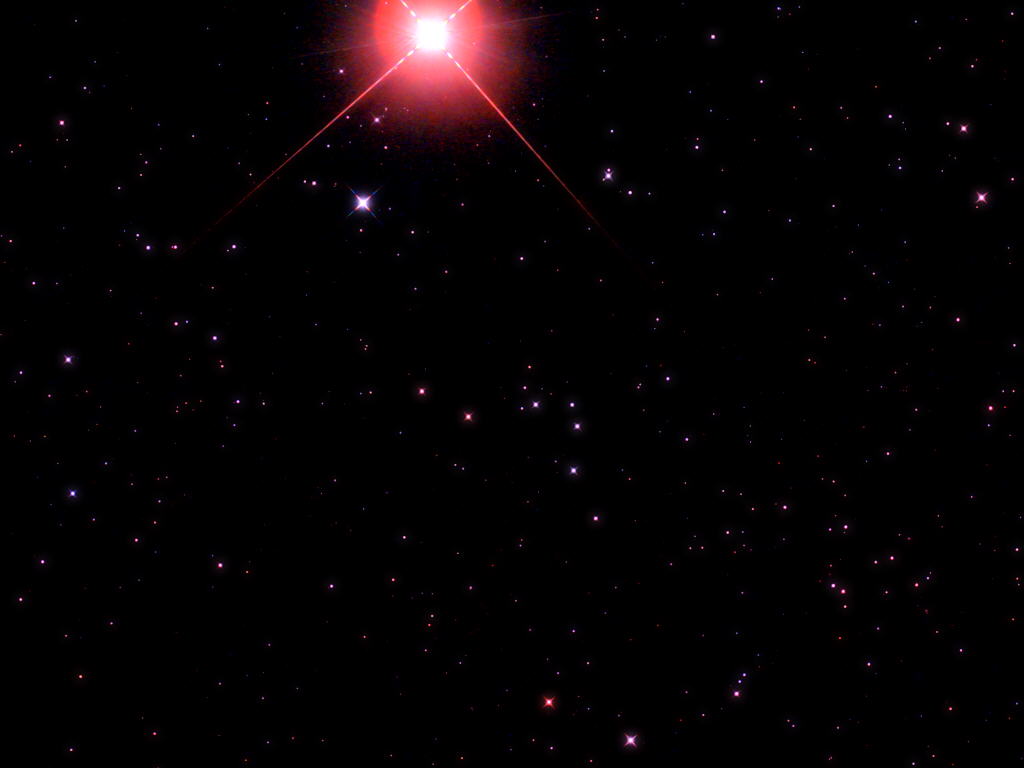 |
| Takahashi FSQ106 and Canon 300D |
Backwards 5Zeta Herculis is the bright star at the top left of this image and makes this faintish asterim very easy to find. In a telescope with an extra reflection (eg a schmidt-cassegrain with right angle prism) then magically the 5 becomes the right way round! |
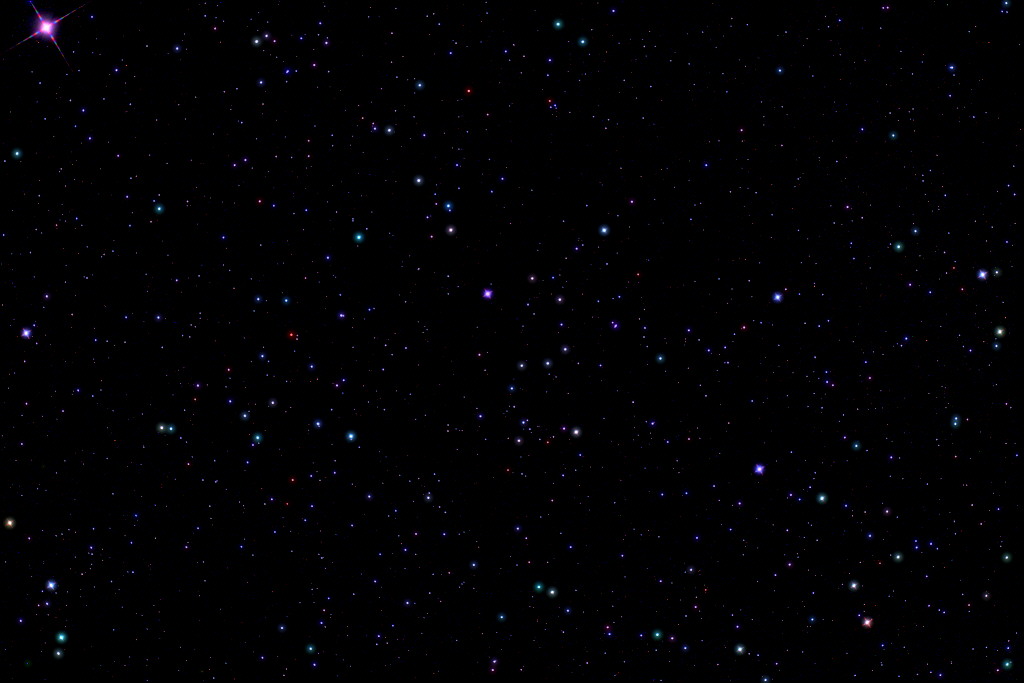 |
| Takahashi FSQ106 and Canon 20Da |
The Toadstool (or Dolphin's Diamonds)Alpha and Gamma Delphini point the way east (5 degrees) to the Toadstool. I was shown this group of stars many years ago by an experienced visual observer from our society. He described it as the Toadstool and that, for me is what it looks like, so I much prefer this name to Dolphin's Diamonds. The tiny galaxy NGC 7025 is involved but too faint to see with small telescopes or image stabilised binoculars but shows up easily when imaged. Can you spot it? (hint - just left of a bright star) |
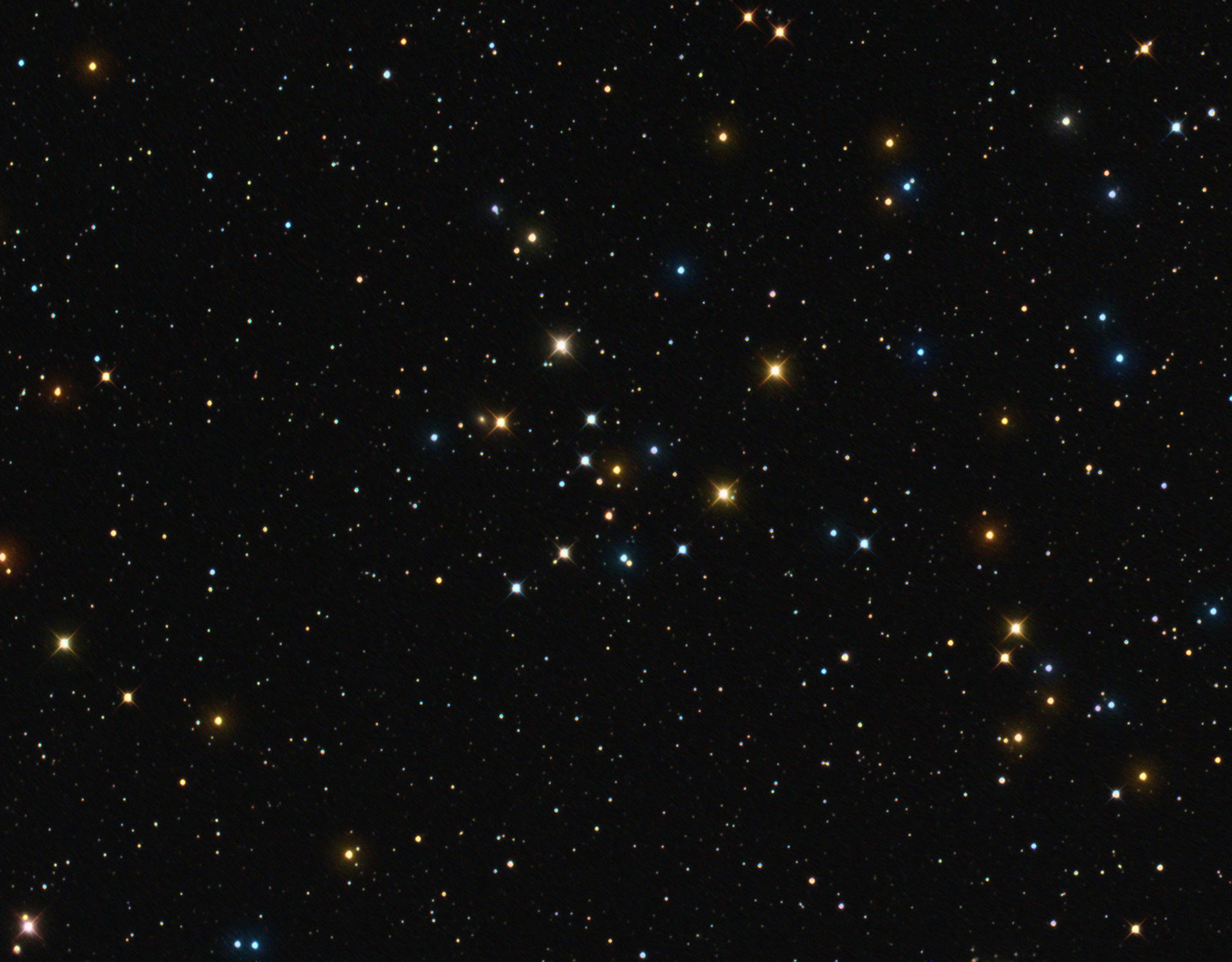 |
| Sharpstar 130mm _Canon 250D |
The Airplane (Aeroplane)With red and blue wing-tips (plus a red tai) this airplane is very reminiscent of those that frequently ruin our astrophotos! To be found in Cassiopeia, this plane appears to be dive-bombing the open cluster M52. |
| Takahashi FSQ106 and Canon 20Da |
The Smiley Face or Cheshire CatBinoculars show a curved arc of stars (the mouth) plus 2 more above them (the eyes) just south-west of the open cluster M38. One the best asterisms for binoculars. |
| Takahashi FSQ106 and Canon 40D |
David's D (Collinder 21)I came across this asterism when imaging galaxy NGC672 and thought it deserved inclusion and a name! Following research by Sandro Villanova et al., this group was found (on the basis of proper motions and radial velocities) not to be the remnant of an open cluster but a chance alignment of brightish stars. |
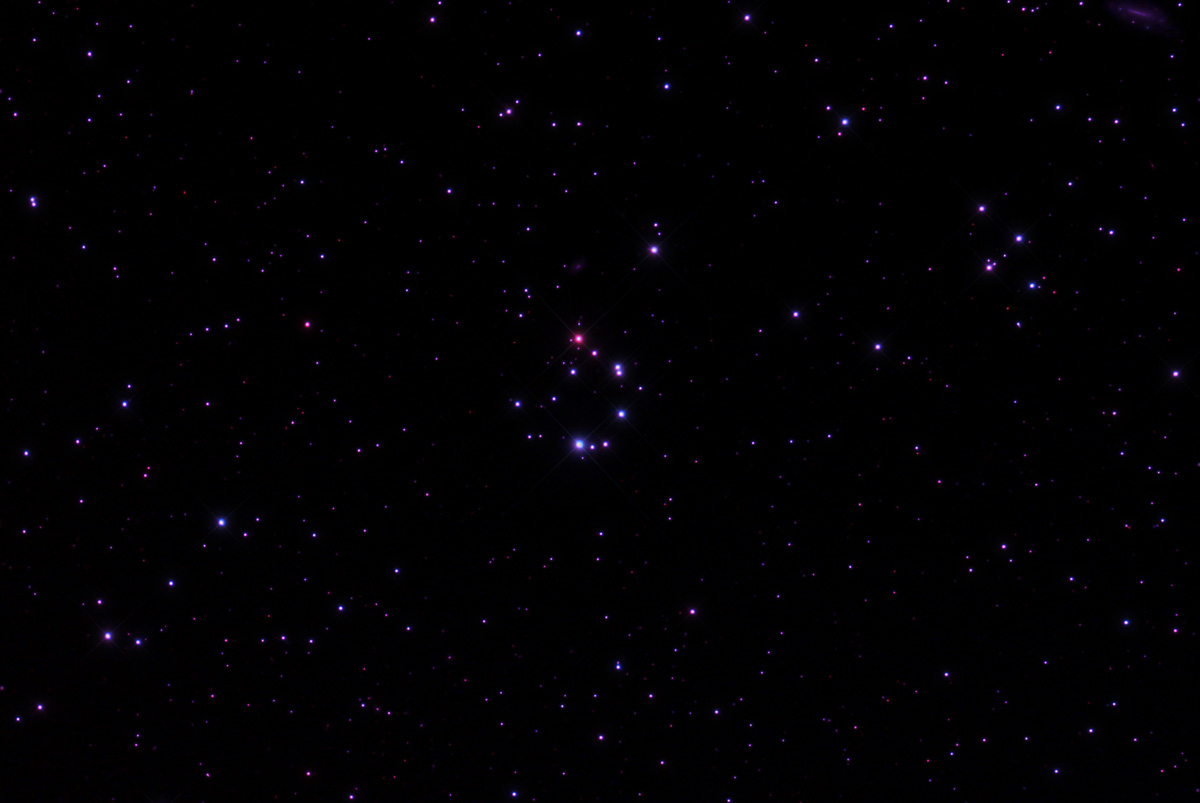 |
| Takahashi FSQ106 and Canon 40D |
Hope you enjoyed these asterisms - if you know some more good ones for binoculars then please let me know. |
